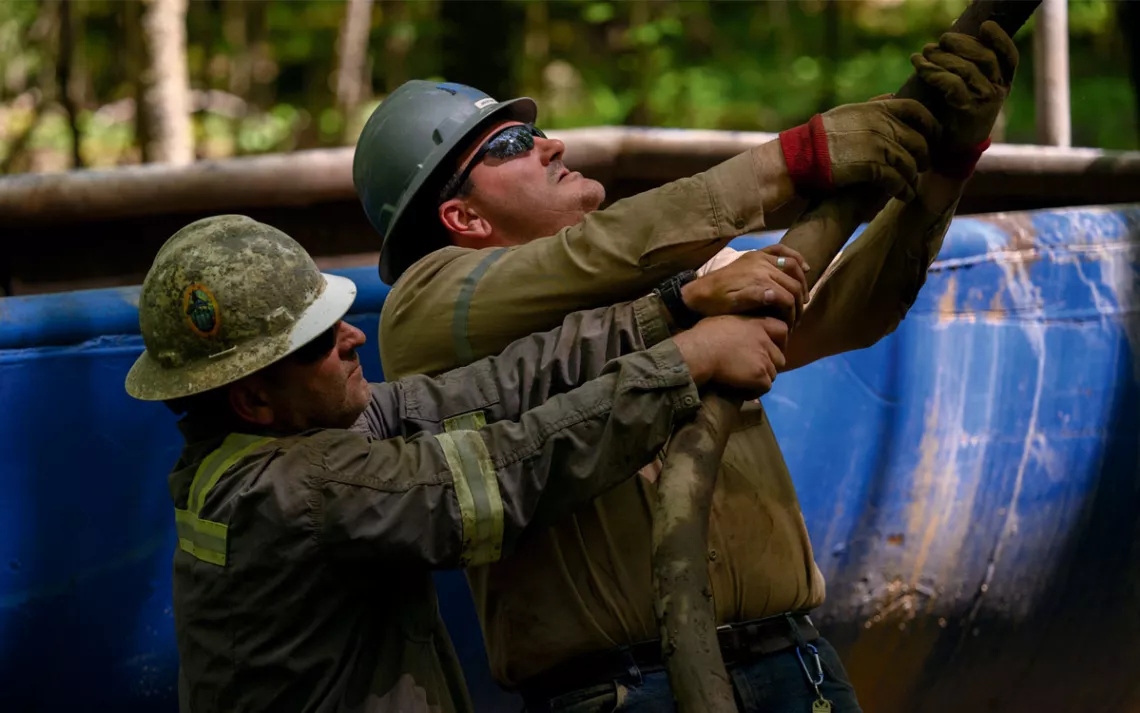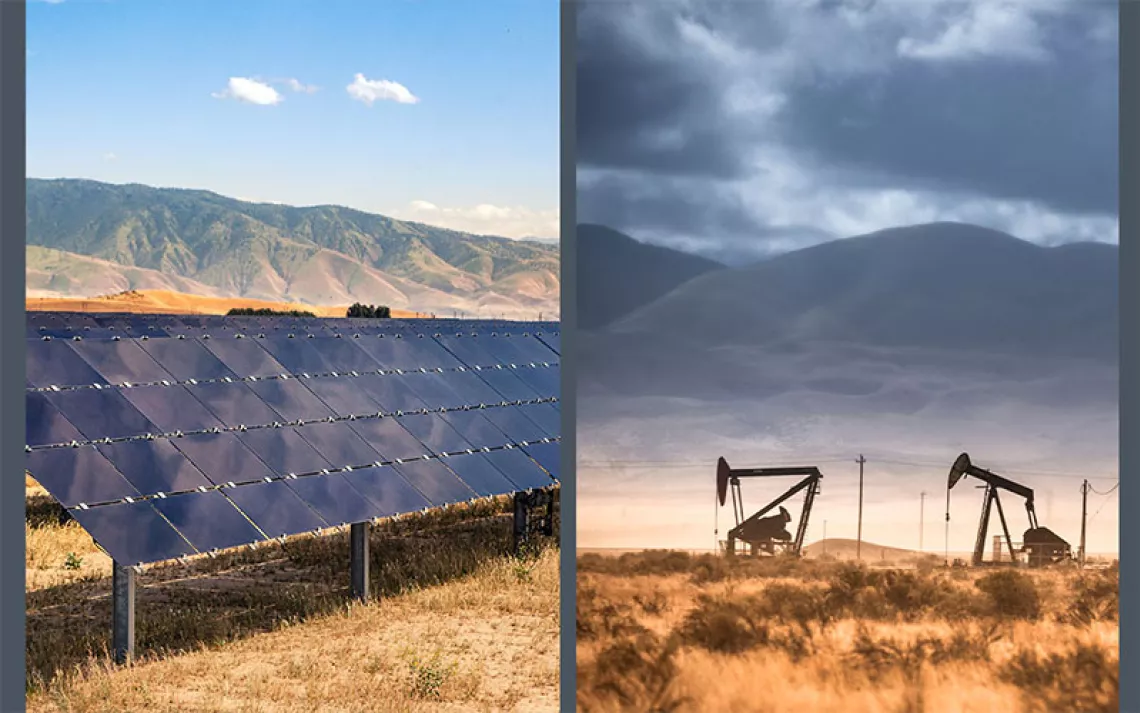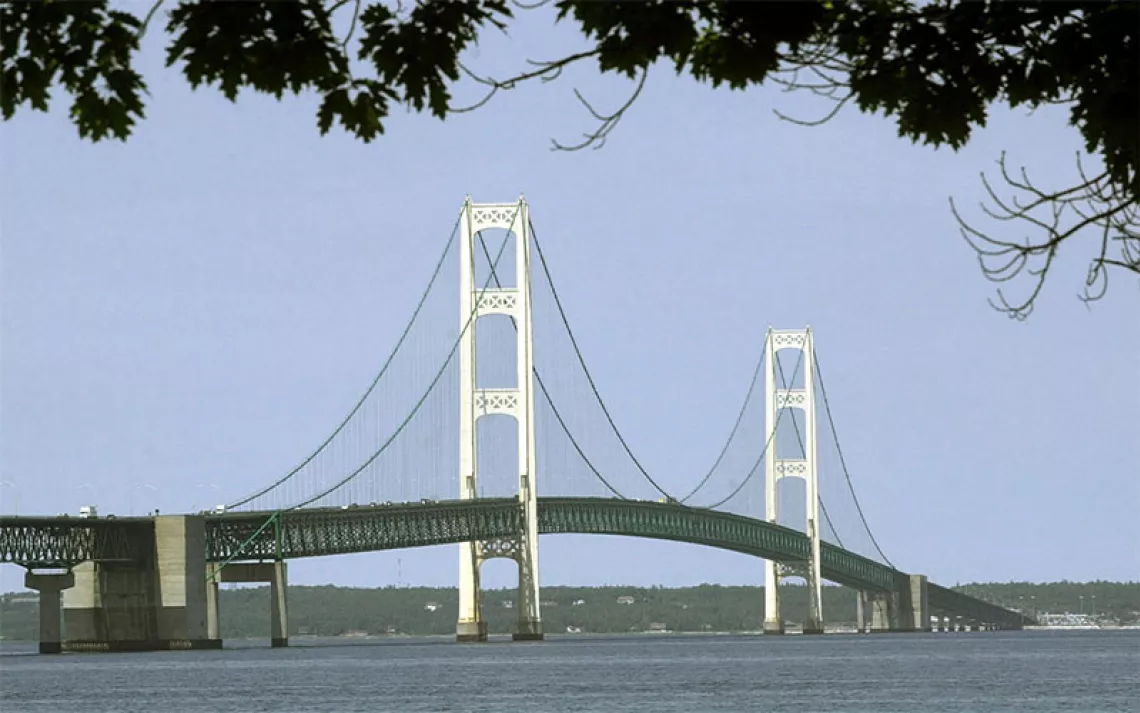Orphaned Oil and Gas Wells Are a Huge Source of Greenhouse Gases
This company is racing to fix Pennsylvania's leaking wells

Plants & Goodwin workers cap an orphaned oil well in Pennsylvania. | Photo by Jeff Swensen
THE BURNT-ORANGE dirt road leading into the forest was new, but it already had deep tire tracks. Building the road had been the first step for Plants & Goodwin workers when they arrived in Crown, Pennsylvania, a tiny dot on the map, somewhere between a vast state park and a vaster national forest.
The road led to a single oil rig on private property. The well at the site was one of 19 that the state had contracted Plants & Goodwin to seal. A mechanical humming filled the air as the drill string, a snake-like configuration of metal piping, returned from its 1,000-foot descent into the ground, emerging piece by piece from a muddy puddle. Workers in hardhats and mud-splattered coveralls disabled a link and then hauled up another piece. Encircling the rig were all the vehicles and rusted industrial contraptions needed for an operation like this.
This oil well was last used more than 80 years ago, probably. No one knows for sure. The drill string reached a depth of 1,080 feet, but Luke Plants, the third-generation owner of Plants & Goodwin, knew that many wells from Pennsylvania’s oil boom went down 2,000 feet. “You have to think like an oil speculator,” he said. Maybe the drill snake had hit some debris that could be washed away, revealing the well’s true depth. But no, this one seemed to be 1,080 feet. Dressed in jeans, work boots, and a crisply pressed shirt, Plants surveyed the site from behind black-rimmed glasses. He waited for a phone call from the Pennsylvania Department of Environmental Protection, giving the OK to pour down cement.
The EPA estimates that there are about 2.2 million unsealed wells in the United States.
Many of these orphan wells—earthen holes once used for oil and gas drilling that have no record of ownership or entity responsible for their cleanup—date back to black-gold rushes from decades or centuries past. In 1859, an unemployed railroad conductor struck oil north of Pittsburgh. Overnight, swaths of land were punctured by drills. Within three years, production in Pennsylvania increased from 4,500 barrels a year to 3 million. Boomtowns sprang up. Then more lucrative wells in other states caused the oil industry to go elsewhere. The Pennsylvania wells ran dry, and the infrastructure was abandoned. The wells were not plugged properly, and there were no standards for cleanup.
Today orphan wells leak toxic chemicals into groundwater and torpedo home values. And, according to the EPA, every year they emit 275,000 tons of methane, an especially potent greenhouse gas. In 2023, an orphan well was blamed for poisoning the drinking water of a township in rural Pennsylvania, and another caused an explosion on a ranch in West Texas.
Estimates for how many are out there, and where they are, are just as elusive as their ages. After the 2021 Bipartisan Infrastructure Law allotted $4.7 billion to plug the wells, 26 states reported 126,806, but those are just the ones people know about. The EPA estimates that there are about 2.2 million unsealed in the United States, concentrated in drilling states like Texas, Louisiana, Oklahoma, West Virginia, New York, and Pennsylvania.
For 48 years, Plants & Goodwin, based in Bradford, near the New York border, serviced the active wells of Pennsylvania. The company even owned some. But when Luke Plants returned home in 2018 with an MBA, he began to transition the company to primarily capping.
“Well-plugging used to be given to whoever could do it cheapest and fastest, and I saw that there was a greater demand for more premium, high-quality decommissioning work to be done,” he said. “So that’s where we wanted to set ourselves apart.”
Plants & Goodwin retires active wells for oil drillers and contracts with state governments, whose pace of well-plugging has accelerated with the infrastructure bill money. Pennsylvania plugged more than 100 in 2023, up from a few dozen a year previously.
Plants has seen the ways that legacy wells can impede on rural and suburban areas. He’s encountered wells that leak methane and noxious fumes next to occupied houses and small-town recreation centers. He has been contacted when commercial developments were halted because construction crews discovered an antiquated well. And he knows that sometimes people siphon methane from abandoned wells for home heating and cooking.
“The historical oil fields of Appalachia really were never addressed while urbanization continued to happen,” he said. “Now you will find wells in the strangest places—people’s backyards, sometimes in parking lots where the well has just been cut off and blacktopped over, and it’s only discovered later.” Sometimes, Plants and his crew find items like tree trunks and cannonballs stuffed into wells.
He said that his own father is relying on bottled water because of leaks from an orphan well in Shinglehouse, another New York border town. In 2023, the first year of wide distribution of the infrastructure bill funds, 6,094 wells were plugged, according to the Department of the Interior. One year later, Plants has some concerns. It all seems too easy. “There needs to be more oversight of these jobs,” he said.
His company did everything possible to ensure that the well in Crown was adequately sealed—hence the 1,000-foot poke into the ground—but rarely do state environmental officials check on the work. Plants fears that less scrupulous contractors could do a partial job.
As the crew was wrapping up, the Department of Environmental Protection called Plants’ site supervisor. The agency was satisfied that they had reached the bottom of the well. Plants & Goodwin prepared for a cement truck to plug it permanently. One down—2.2 million more to go.
 The Magazine of The Sierra Club
The Magazine of The Sierra Club



